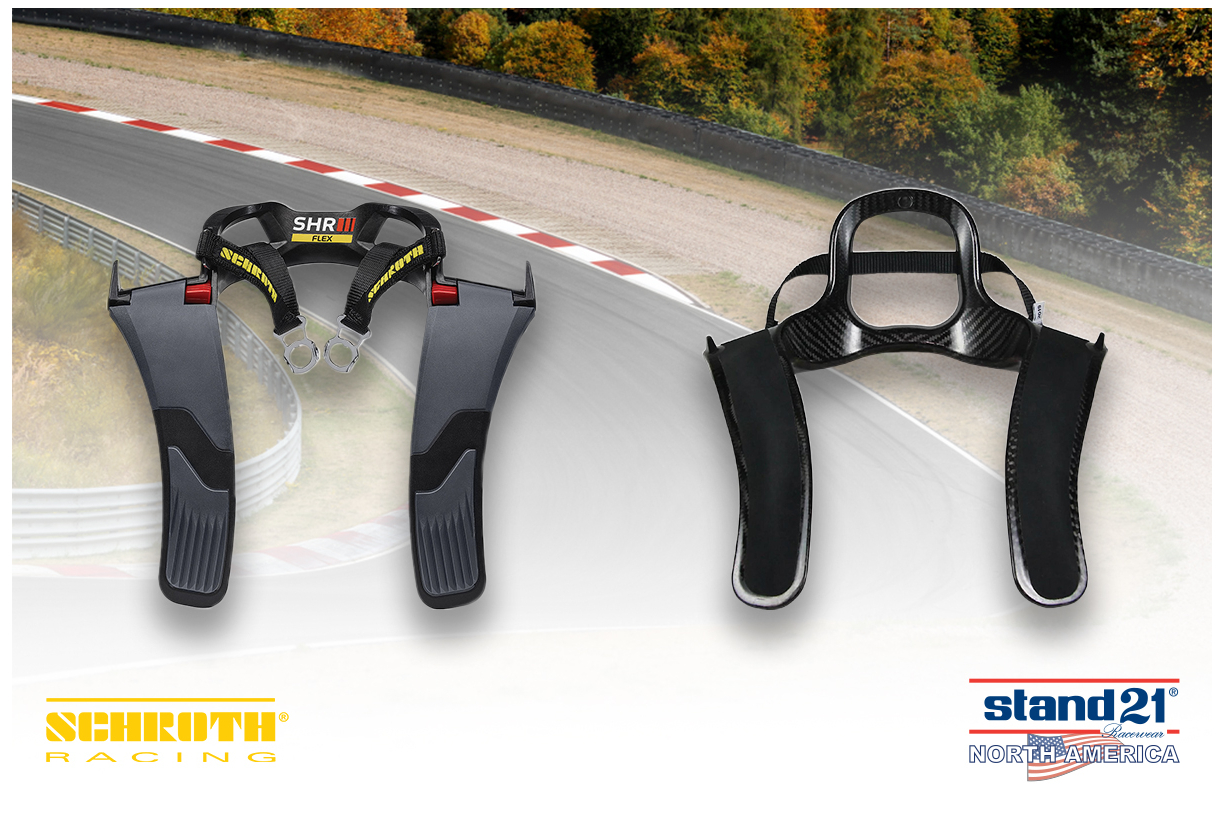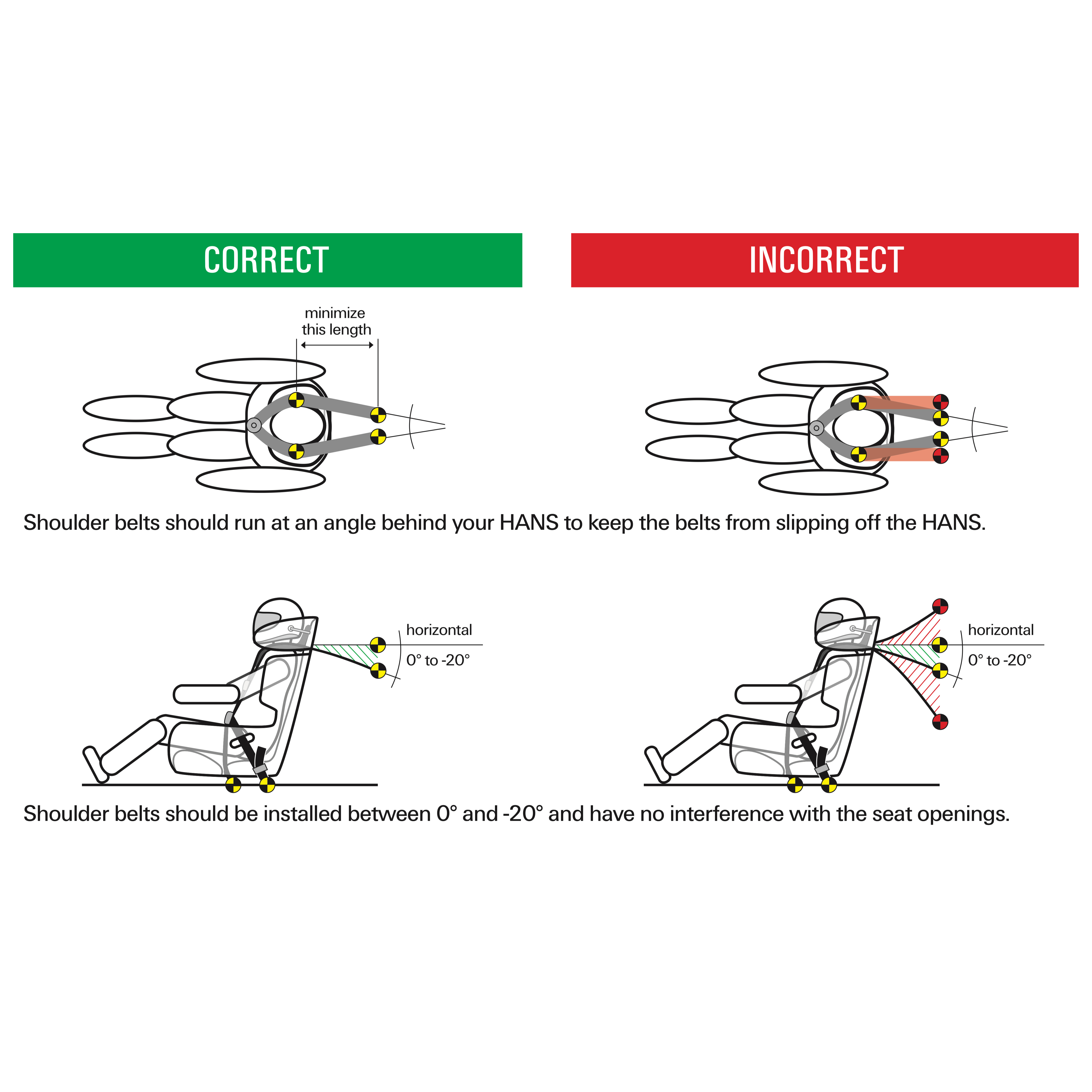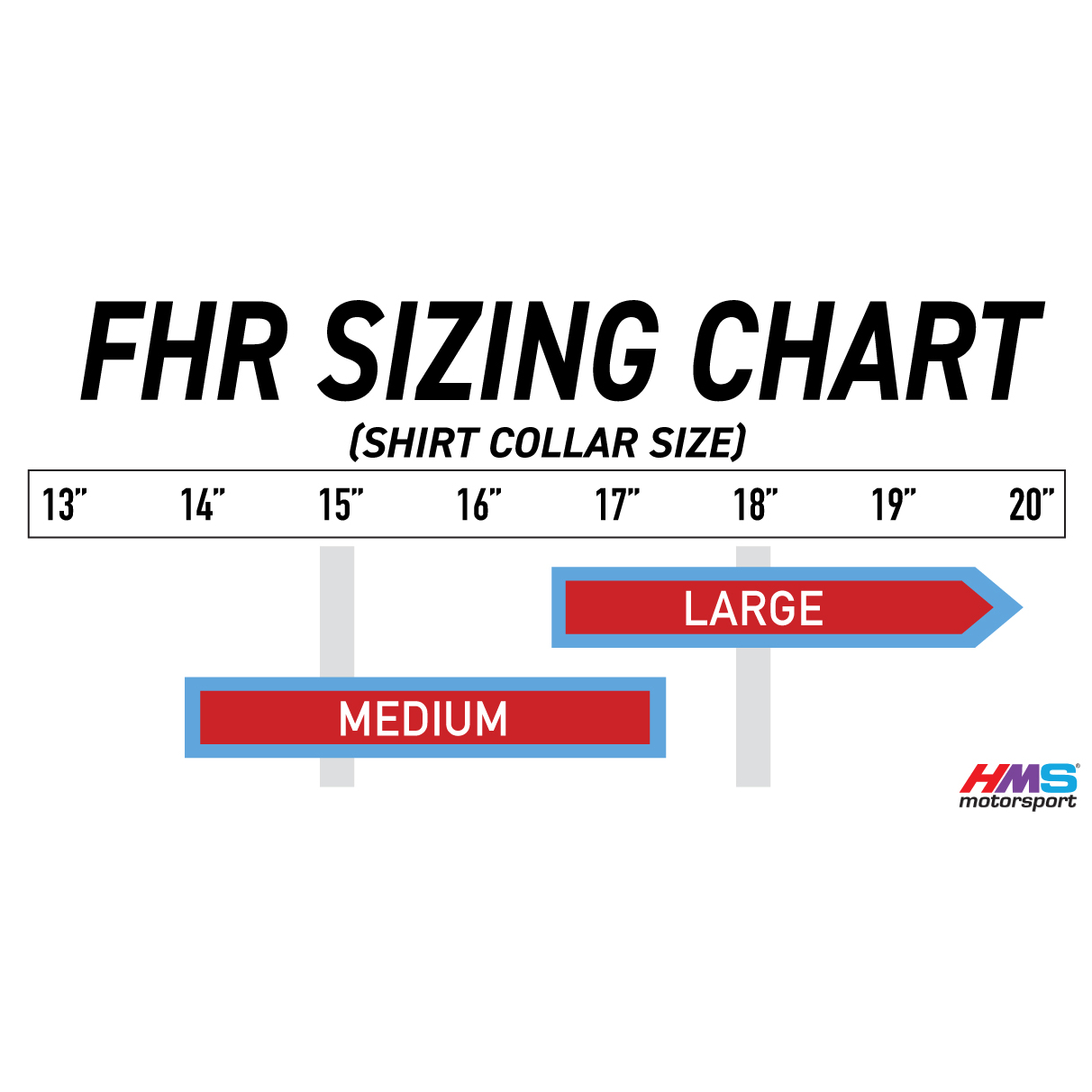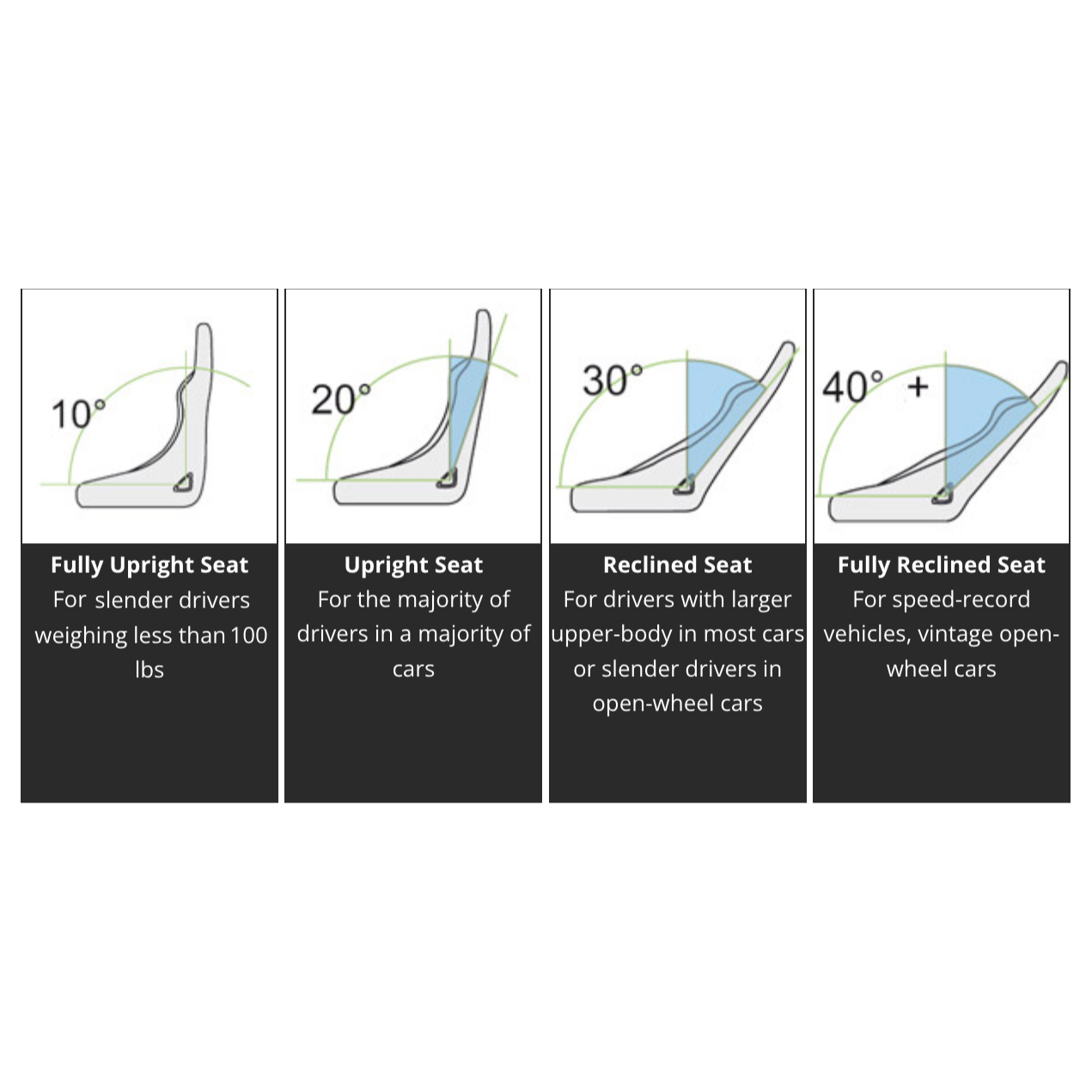When considering the purchase of a Frontal Head Restraint (FHR), it is important to understand how the vehicle, driver, and FHR device interact with each other. This Buyer's Guide covers the basics needed to select the right FHR for your application. Contact Sales@hmsmotorsport.com with any additional questions you may have!
Equipment requirements
The first requirement when using an FHR device is a properly prepared vehicle. Some modifications to your car may be required, such as replacing the seats. The seat must have dedicated harness openings (either single or dual) for the shoulder straps to travel through which ensures the harness stays in place during an accident. The harness itself must be a 4,5, or 6-point Frontal Head Restraint approved belt properly installed to the manufacturer's specs.
Both 2” and 3” shoulder belts may be used however most drivers prefer 2” webbing. Drivers must be equipped with an SA2015 or SA2020 helmet with FHR approved anchors installed.
Fitment
When selecting an FHR, it’s important to pick the right size device for the driver. The size of the device is typically determined by assessing the user's size, build, and neck collar size. A properly fitting device will sit comfortably on the shoulders, leaving room between the device and the neck. If the device is too tight/pinching the neck area, a larger size will be more suitable. A device could be considered too big if close to the width of the user's shoulders, and if it sets the belt webbing wider than optimal.
Users with a Shirt Collar size smaller than 16” typically prefer a medium device. On the other hand, drivers with a 16.5”+ shirt collar, with a larger upper body, or broader shoulders may find the large to be more comfortable
Angles
Along with various sizes, many FHR devices are offered with different collar angles to allow for use at virtually any driving position
- 10 Degree: Fully upright seat, also good for some slim drivers.
- 20 Degree: Upright seat, for use with majority of drivers in most cars.
- 30 Degree: Reclined seat, for drivers with a larger upper body in most cars, OR drivers with slim bodies in open wheeled cars.
- 40+ Degree: Fully reclined seat, for speed-record vehicles and vintage open wheeled cars.



